HIGH FIDELITY CT-1 ULTIMATE REFERENCE PHONO CABLE

“Only twice in my life have I recorded a Bach suite. In both cases, I cannot forgive myself – I acted rashly. Now, I must pluck up courage and record all the Bach suites…” Mstislav Rostropovich, just before he recorded the entire Bach “Suites pour violoncelle” for EMI in 1995
There comes a time in every man’s life when he starts searching for exit-level things. Finding the right woman, buying the right house, watch or hifi, recording the ultimate Bach cello suites, you name it. All we need is just one prime example of each, that which represents the pinnacle of who we are and what we want to be remembered for, and a gift of grace that we can hand down to the next generation (except the woman). After all, we do not want to be in the rat race forever. But as Rostropovich mentioned, taking that final step can take a boatload of cahones. I have met audiophiles who are always searching for the next best thing, or sometimes just the next thing, period. Some of them may simply be afraid to face up to the final truth, just in case they find themselves in the process and do not like what they see. So they put it off forever, always on the run, never settling for anything, under the pretext that they are adventurous savourers of new things. In the words of Jalal ad-din Muhammad Rumi, a 13th century mystical Persian poet:
“Why should I seek? I am the same as
He. His essence speaks through me.
I have been looking for myself!”
In a beautifully symmetrical God-created, book-ended world such as ours, it stands to reason that when there is an entry-level version of something, there must be its concomitant exit-level counterpart. We all know the former are a dime a dozen and the latter extremely few, but it does not follow that the latter is easy to find. In fact, the opposite is true. But because it even exists, so it behooves all us mere mortals to be honest with ourselves, take a deep breath, and embark on a quest to discover that ultimate person/product/creative act of self-expression/thing that reflects who we are, not what someone else thinks we should be. Think of it as a life-long mission that started when that upgrade bug first bit, except that it was not actually a bug. It was a calling.
In the early days of my audiophile journey, I would often come across reviewers who declared something to be the “ultimate” or “the best”. I was naïve enough to think that they actually meant that they have heard every available example of that class of component and is now proclaiming this Peak Amplifier from Acme Audio is the best of them all. Now that I am older and perhaps slightly more intelligent, I know that this is patently impossible. Not even if you are the most decorated scribe in the world and manufacturers queue overnight in sub-zero temperatures to beg you to listen to their creations. Life is too short and subsequently we pick and choose. I believe what these erstwhile reviewers were really saying was: Peak Amplifier is the ultimate piece that they have found, in their necessarily limited experience, and is something that they will happily live with as their exit-level component, whether they consciously knew or intended to say or think “exit-level”.
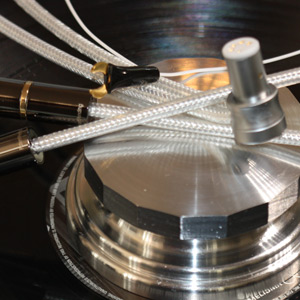 RICK’S ULTIMATE REFERENCE PHONO CABLE
RICK’S ULTIMATE REFERENCE PHONO CABLE
“Ultimate Reference”. I had to read that again. Not just “Reference” level, but “Ultimate”. After what I have written above, it is a brave claim for any manufacturer to make. Yet, many of them make precisely such a claim (and much more) all the time, to the point where we get inured to it. When we see another so-called “Ultimate Cable” we don’t even blink an eyelid. But – and there’s always a but – there is an off chance that the claim could really be true. What if it was and we missed out on it?
Rick’s CT-1 cables’ unique selling point is their patented Magnetic Conduction Technology®. Rick Shultz is not a fly-by-night operator. His previous ventures include the successful Virtual Dynamics company manufacturing hifi components and cables, so he comes with full street cred. An email (or several) later, Rick set to work right away making a CT-1 Ultimate Reference phono lead for me –all UR level cables are made to order – which arrived about 3 weeks later.
Before I proceed, one thing I will need to get out of the way early on in this review: the first sample of the CT-1 Ultimate Reference phono leads gave me a slight bit of grief. It refused to sync my Soundsmith strain gauge cartridge to its proprietary SG-200 phono stage. When told about this, Rick sent me another pair of cables pronto which arrived in less than a week’s time. It is this kind of heroic customer service that keeps my faith alive in luxury cable manufacturers who do not expect customers, after shelling out big bucks, to be masochists and live with poorly-constructed products and non-existent after sales service. Bravo to Rick and score 1 to High Fidelity.
ULTIMATE REFERENCE TECHNOLOGY
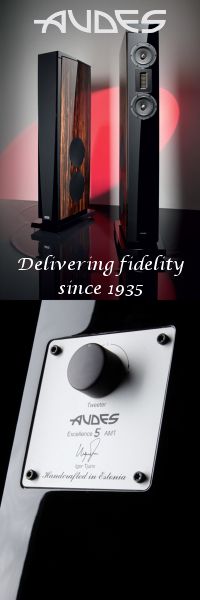 Each CT-1 cable in Rick’s line of cables (which include not just the phono cable but interconnects and power cords) features this technology. Without going into detail (which has already been discussed in many other reviews), High Fidelity puts it this way: Magnetic Conduction is a patented method of signal transfer. Any cable transferring an audio signal creates a magnetic field around the signal itself. So, the reasoning goes that if you pre-apply a magnetic force that sets up a magnetic field, and when a signal passes that field, it will be “strongly motivated” (their words) to follow its direction of flow. Further, the magnetic poles at both ends of the cable are also aligned in a certain way as to maximize this current flow through a process called ‘Magnetic Mapping’. This has the supposed effect of minimizing random electrical pathways along the conductor and ensuring that whatever entered the cable at the source end reaches the destination end in as intact a fashion as possible.
Each CT-1 cable in Rick’s line of cables (which include not just the phono cable but interconnects and power cords) features this technology. Without going into detail (which has already been discussed in many other reviews), High Fidelity puts it this way: Magnetic Conduction is a patented method of signal transfer. Any cable transferring an audio signal creates a magnetic field around the signal itself. So, the reasoning goes that if you pre-apply a magnetic force that sets up a magnetic field, and when a signal passes that field, it will be “strongly motivated” (their words) to follow its direction of flow. Further, the magnetic poles at both ends of the cable are also aligned in a certain way as to maximize this current flow through a process called ‘Magnetic Mapping’. This has the supposed effect of minimizing random electrical pathways along the conductor and ensuring that whatever entered the cable at the source end reaches the destination end in as intact a fashion as possible.
So far, so simple. This is where things get slightly more complicated.
Externally, it looks like a simple metal cylinder has been spliced in the middle of the cable itself. Each cable has one, so in a Left-Right pair, you will find two of them in dual-mono configuration, if you like. These cylinders contain the rare-earth magnets that produce the Magnetic Conduction effect. In Rick’s top of the line power cords, the magnets can even be arranged in a helical or spiral structure to focus and enhance the magnetic conduction effect even further. But that’s not all, for the designer has other tricks up his sleeve. The RCA plugs themselves each has 52 individual parts and are all designed by the man himself. The plugs also make use of a metal known as “mu metal” which is particularly prized for its EMF blocking properties and therefore used in many high-end mains or output transformers as a housing or bell-end. At the ends of each cable are also located similar rare-earth magnets for Magnetic Mapping purposes. I would be remiss not to mention that there is a Pinlok feature on the hot pin of each RCA plug, which is essentially a bulge that helps secure the male member inside the female member of the coupling procedure, thus ensuring greater mechanical efficiency. There are other features, but you will be able to read all about them in other readily-available articles. My understanding is that the DIN cable is off-the-shelf, and Rick told me that soldering the thick CT-1 cables to the small dinky DIN holes was a royal pain, and likely the cause of the faults in the first set of cables. Before I leave this section, I would like to point out that the CT-1 Ultimate Reference sits right at the top of the line starting with the original CT-1 cable launched sometime in the middle of 2012 (which in that guise was already wildly raved about). With each upgrade of cable model, there are apparently quite marked increases of sound quality. I did not have the original CT-1 or CT-1 Enhanced or Ultimate cables at hand to compare, so I cannot attest to that. This review is just about the CT-1 Ultimate Reference assessed by itself and compared to other DIN phono cables I could muster, borrow or remember listening to.
ULTIMATE REFERENCE SOUND
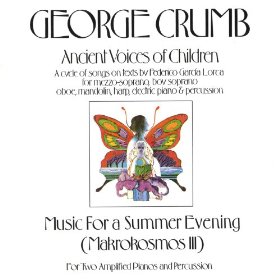 My notes started way back in September last year when I first started listening to the CT-1 Ultimate Reference. Output signals from the cartridge are notoriously miniscule (less than one millivolt) and the magnets are extremely big, so running in that cable is like trying to cut a granite block by putting it under a dripping tap. But right on the very first page of my notes, I saw that the first LP I cued up after installing the CT-1s fresh out of the box was George Crumb’s Ancient Voices of Children (Nonesuch H-71255) in which Jan Gaetani sings ¿De donde vienes, amor, mi nino? from “Dame of the Sacred Life Cycle”. During that song, I flipped the polarity switch on my preamp for a lark. And for the first time in my life, ever, I heard the effect of reversing absolute phase. It was there, right in my face, clear as a bell. The bass came back, everything sounded cleaner and flowed with greater ease. With no other cable or system was I ever able to hear this effect so clearly. And my previous systems were no chopped liver either. It was a portent of things to come.
My notes started way back in September last year when I first started listening to the CT-1 Ultimate Reference. Output signals from the cartridge are notoriously miniscule (less than one millivolt) and the magnets are extremely big, so running in that cable is like trying to cut a granite block by putting it under a dripping tap. But right on the very first page of my notes, I saw that the first LP I cued up after installing the CT-1s fresh out of the box was George Crumb’s Ancient Voices of Children (Nonesuch H-71255) in which Jan Gaetani sings ¿De donde vienes, amor, mi nino? from “Dame of the Sacred Life Cycle”. During that song, I flipped the polarity switch on my preamp for a lark. And for the first time in my life, ever, I heard the effect of reversing absolute phase. It was there, right in my face, clear as a bell. The bass came back, everything sounded cleaner and flowed with greater ease. With no other cable or system was I ever able to hear this effect so clearly. And my previous systems were no chopped liver either. It was a portent of things to come.
In the first 2 months of burning in, the CT-1 Ultimate gradually revealed its true colors day by day, in slowly-increasing amounts. I note that I was floored by the way that it gave me “completely unfettered dynamics” (Cornell Wind Ensemble playing the “Concerto for Piano & Wind Ensemble” by Brian Israel CUWE-27), its “masterful ways with 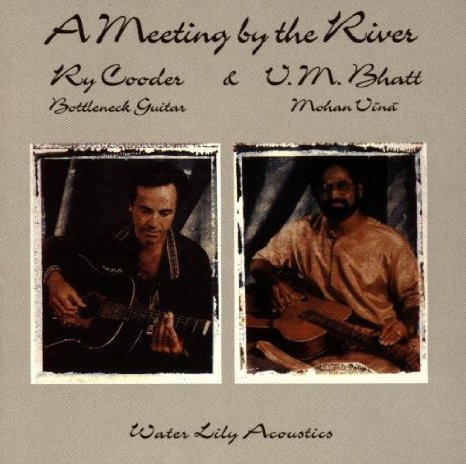 instrumental textures” (Debussy’s “Sonata for Flute & Harp” Wergo WER 60025) and how it has “a startling ability…to encompass the entire dynamic range of any record I throw at it” (Previn’s “Guitar Concerto” played by John Williams with the LSO Columbia M 31963). Over the next few months, it continued to get even better. I put on all kinds of music, from pop to jazz to genre-defying works (Ry Cooder’s A Meeting by the River on Water Lily Acoustics, more of which later). My jaw dropped to the floor so many times from hearing new, unexpected things from old familiar records that my neighbor downstairs must have thought I was playing one-on-one basketball in my room.
instrumental textures” (Debussy’s “Sonata for Flute & Harp” Wergo WER 60025) and how it has “a startling ability…to encompass the entire dynamic range of any record I throw at it” (Previn’s “Guitar Concerto” played by John Williams with the LSO Columbia M 31963). Over the next few months, it continued to get even better. I put on all kinds of music, from pop to jazz to genre-defying works (Ry Cooder’s A Meeting by the River on Water Lily Acoustics, more of which later). My jaw dropped to the floor so many times from hearing new, unexpected things from old familiar records that my neighbor downstairs must have thought I was playing one-on-one basketball in my room.
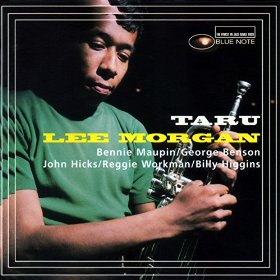 For example, the entire band led by Lee Morgan exploded into my listening room through the CT-1 UR like it would in real life – thud. This 1968 Michael Cuscuna release of Avotcja One (Taru Blue Note Classic LT-1031) was mastered by Rudolph Van Gelder and the CT-1 reproduced every last bit of goodness from it.
For example, the entire band led by Lee Morgan exploded into my listening room through the CT-1 UR like it would in real life – thud. This 1968 Michael Cuscuna release of Avotcja One (Taru Blue Note Classic LT-1031) was mastered by Rudolph Van Gelder and the CT-1 reproduced every last bit of goodness from it.
Oliver Nelson’s Speaker’s Corner reissue of Blues and the Abstract Truth on the Impulse label was stupendous, with all the natural color and weight of the instruments presented in full force and flower – thud. Even extremely worn LPs which I thought were beyond saving, such as Andreas Segovia’s Espana playing Rodrigo, Granados and Villa Lobos et al, the CT-1 Ultimate Reference was able to eke out wondrous amounts of ambience locked in the (mono!) grooves over half a century old – thud. That recording studio transcended time and space to re-create itself in my living room, and I cannot think of any better word to describe that besides ‘miraculous’ – double thud.
So far, however, I have not told you anything you have not already read about other cables in other reviews. An Ultimate Cable must do more than just the typical audiophiley things. It must set such a high benchmark that, once attained, it instantly achieves the status of a classic and finds a place in audio history. To me, the CT-1 Ultimate Reference does that, and more. I trawled through my notes again to find clues as to how it achieved such a grand feat in my system where many other high priced cables have failed. Here’s a sampling:
· On Modern Jazz Quartet’s Django LP, playing their “Autumn in New York”, I felt connected to the music making in a deep, profound way.
· Have I ever heard Penderecki’s “Threnody for the Victims of Hiroshima” (on EMD 5529) so present, so real, and so unadulteratedly terrifying, than through the CT-1 Ultimate Reference? I asked myself rhetorically. The answer was no. For the first time I really began to understand what Penderecki was trying to say.
· In the aforementioned Previn “Guitar Concerto” conducted by the composer himself, I could tell an almost telepathic understanding between the conductor, the LSO and the soloist (Williams) with the result that the piece appeared to be performed by one single connected entity.
· 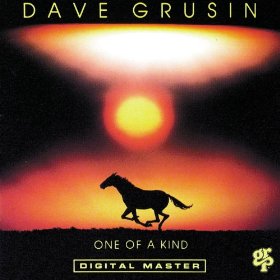 Dave Grusin’s One of a Kind LP on GRP, a guilty pleasure for decades, is not jazz but Grusin (who has always been more of a harmony-smith than a melodic improviser) did take some brave stabs at modal and whole-tone ad-libbing in his cover of Harvey Mason’s “Modaji”. My favourite track on this LP is “Playera” – the old name for “Andaluza” by Granados – in which the best thing is and always has been Ron Carter’s phenomenal bass playing. I was actually inspired to unsheathe this LP after listening to the famous Spanish-flavoured Decca album Espana (conducted by Argenta), in itself inspired by Segovia’s playing in the even older monophonic LP, which always gives me goosebumps despite its age and the poor state of the vinyl. It was not an audiophile pursuit – it was all about music.
Dave Grusin’s One of a Kind LP on GRP, a guilty pleasure for decades, is not jazz but Grusin (who has always been more of a harmony-smith than a melodic improviser) did take some brave stabs at modal and whole-tone ad-libbing in his cover of Harvey Mason’s “Modaji”. My favourite track on this LP is “Playera” – the old name for “Andaluza” by Granados – in which the best thing is and always has been Ron Carter’s phenomenal bass playing. I was actually inspired to unsheathe this LP after listening to the famous Spanish-flavoured Decca album Espana (conducted by Argenta), in itself inspired by Segovia’s playing in the even older monophonic LP, which always gives me goosebumps despite its age and the poor state of the vinyl. It was not an audiophile pursuit – it was all about music.
· A similar music-connections moment occurred when, right after I had finished listening to Bach’s ”Chaconne” played by Johanna Martzy (on an extremely rare 45rpm pressing by Electric Recording Company of the legendary recording), I was inspired to pull out Ry Cooder’s A Meeting By the River. Both discs could not have been more different musically, but they are linked by a spiritual kinship, and both are equally intense, equally uncompromising. Despite being divided by continents, cultures and centuries of time, there was more in common between the music and musicians than strangers who have lived next to each other for 60 years. I wouldn’t be surprised if Bach, had he been alive in this century, would happily sit down and jam with Cooder and Bhatt on a Hammond B3, and they would all understand each other perfectly without having to say a word.
Through the CT-1 Ultimate Reference, I always saw new meaning in the records I played. I understood what I was listening to. Meaning and understanding. That is what this Ultimate Cable should give you.
I did hear flaws in the cable. Well, the fact that it is so transparent that it will show up any problems in system synergy, set up, design or loudspeaker positioning, or room resonances may not necessarily be considered by some to be a flaw. If the fact that it is so unforgiving and brutally honest is an imperfection, then so be it. The cable also sounds supremely neutral, and those wishing for a bit of warmth and coziness to pad things up will find it uncooperative. Again, it depends on your perspective as a listener. Some consider (and I find myself in this camp) that a cable should only be a truthful purveyor of signal from source end to destination end. Others claim that no cable can be absolutely neutral, so why not use it to ‘tune’ their systems? It’s not important who is right or wrong. As I said right in the beginning, you have to find that piece that is just right for you, neither too hot, nor too cold. Nobody else’s opinions should matter.
One more thing: I did notice a slight loss of lower-mid and bass slam in my system compared to other cables. What is there is very clear and see-through, and still very satisfying. But that final bit of weight seems to be missing. However, that appears to be a rather room-dependent issue as other reviewers do not seem to have noticed this concern. Bass weight is a very subjective thing and what some hear as slam is just boom to others. So, as in all things audio, YMMV.
ULTIMATE CONCLUSION
To me, an “exit-level” component is not an objective concept, but a subjective one. It is one that brings you joy every time you listen to it, and forever banishes the upgrade-itis or whatever name you give that dreaded disease. When you have found your exit-level component, you will know. It is a visceral experience, not an intellectual response. It is a culmination of years of searching and research, listening and analyzing, buying and selling, trial and error, successes and disappointments, together with all the combined knowledge of what you personally like or dislike parsed into a single statement of who you are as an audiophile. You will no longer want or be bothered to listen to anything else, no matter how sexy or alluring. You have reached your end-point, your destination. And it feels irrefragably liberating.
One word about the cost of the High Fidelity cables. Yes, they are expensive whether in an absolute or relative sense. But asking whether a 10 thousand dollar cable sounds a hundred times better than a 100 dollar cable is the wrong approach however. Is a 300 thousand dollar 2012 Shelby Cobra 100 times better than a 3 thousand dollar rusty old clunker? I would submit that it is not. Both get you where you want to go without having to walk there. So what if you get there faster (unless time was of the essence) or that more heads turned as you passed by (unless you are an attention junkie). The basic function was carried out, i.e. getting you from one set of coordinates to another. Whether paying an extra 297,000 clams for a car that does it in style and panache is a question of value with a big V. And in view of the above discussion on finding an exit-level product, the question really should be, “is this cable an exit-level product worth this amount of money to you personally?” The answer, obviously, depends on whether the CT-1 Ultimate Reference is such a product to you.
I cannot do better than to leave you, penultimately, with the words of maestro Rostropovich explaining why he chose the Basilique de Sainte-Madeleine in Vezelay, a small village in Yonne located in the Burgundy region of central France, to record his magnum opus:
“When I first entered this church I saw the rhythm of the internal architecture shorn of all superfluity, with none of the gilt and ornamental trimmings of Baroque style. I saw the severity of line and the rhythm of the vaulted construction, which reminds me so powerfully of the rhythm of Bach’s music. It seemed to me that I had found the right place.”
In the High Fidelity CT-1 Ultimate Reference Phono Cable designed and built by Mr. Richard Schultz, I have found my exit-level phono cable.

Stephen Yan
High Fidelity Cables:
Price: CT-1 PHONO CABLE: $1,600 for 1m pair (each additional 0.5 m is $200)
Price: CT-1U PHONO CABLE (Ultimate): $4,900 for 1m pair (each additional 0.5 m is $450)
Website:www.highfidelitycables.com
Email: info@highfidelitycables.com
PHONE NUMBERS
Main : 214-614-7111
Service : 214-614-7112
Shipping : 214-614-7109
Toll Free : 1-844-348-6292
ADDRESS
901 N McDonald Street
STE 502
McKinney, Texas 75069
USA
Stereo Times Masthead
Publisher/Founder
Clement Perry
Editor
Dave Thomas
Senior Editors
Frank Alles, Mike Girardi, Russell Lichter, Terry London, Moreno Mitchell, Paul Szabady, Bill Wells, Mike Wright, and Stephen Yan,
Current Contributors
David Abramson, Tim Barrall, Dave Allison, Ron Cook, Lewis Dardick, John Hoffman, Dan Secula, Don Shaulis, Greg Simmons, Eric Teh, Greg Voth, Richard Willie, Ed Van Winkle, Rob Dockery, Richard Doran, and Daveed Turek
Site Management Clement Perry
Ad Designer: Martin Perry






Be the first to comment on: HIGH FIDELITY CT-1 ULTIMATE REFERENCE PHONO CABLE